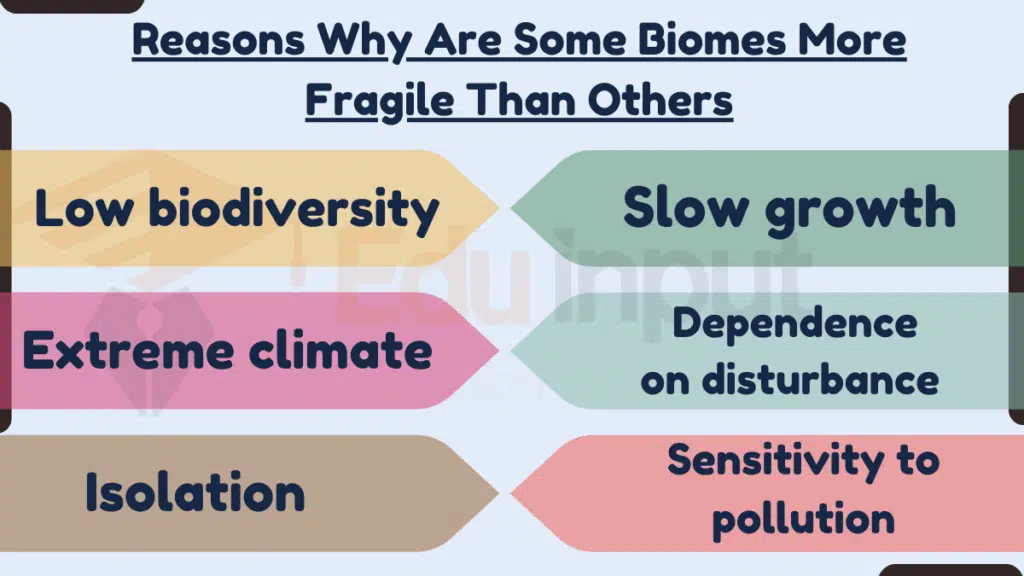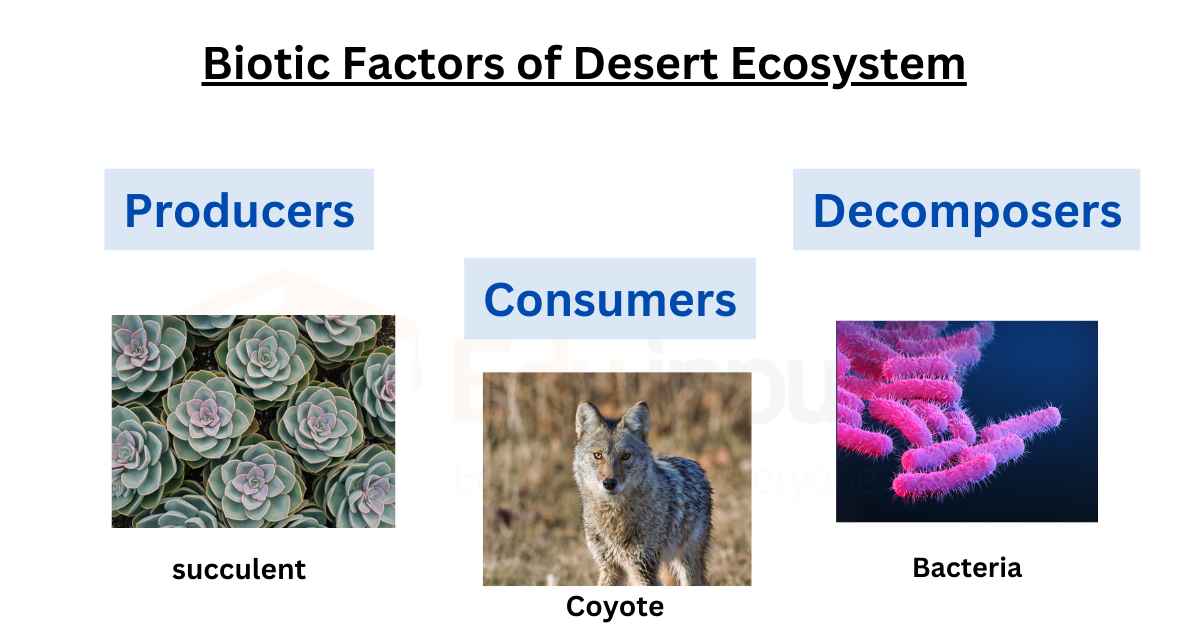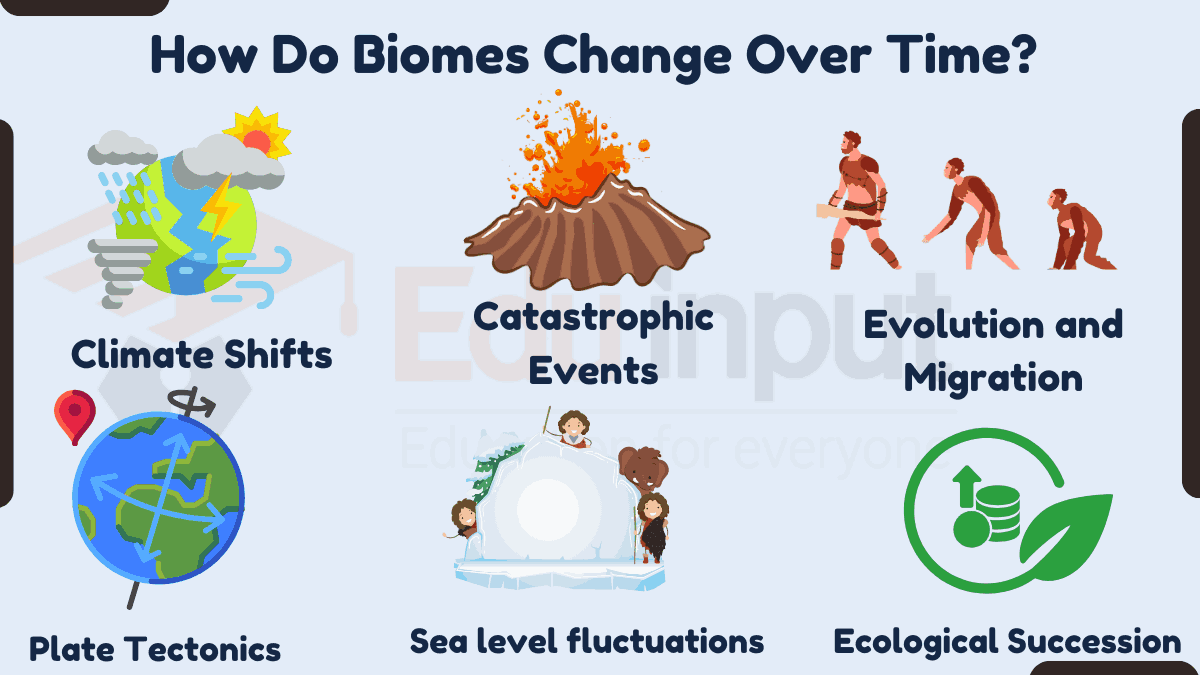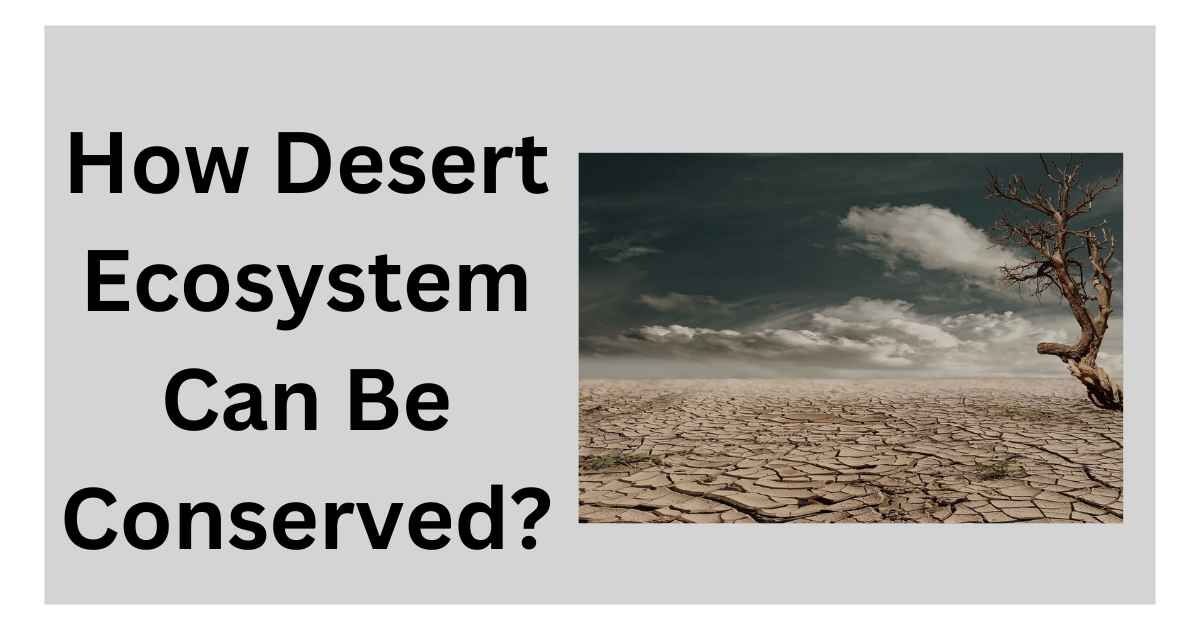7 Reasons Why Are Some Biomes More Fragile Than Others?
Low diversity, climatic extremes, isolation, slow growth, disturbance dependence, pollution sensitivity, and human exploitation makes certain biomes more fragile than others.

Also Lear Also learn : What factors primarily determine a biome?
How Do Biomes Change Over Time?
Why Are Some Biomes More Fragile Than Others?
Here are a few reasons why some biomes are more fragile than others:
1. Low biodiversity
Biomes with few plant and animal species, such as tundras and deserts, are more fragile because the loss of any species can disrupt the food web and ecosystem services. Higher diversity provides more ecological resilience.
The loss of a single species from a low-biodiversity biome can have a devastating impact on the ecosystem.
For example, the loss of bees from a tundra biome could disrupt the pollination of plants, which could lead to a decline in food sources for other animals.
2. Extreme climate
Biomes with extreme cold, heat, or dryness, such as tundras and deserts, are more susceptible to slight changes in climate that can quickly exceed tolerance thresholds for endemic organisms. More moderate climates are less fragile.
Biomes with extreme climates are more vulnerable to the impacts of climate change.
For example, the rising sea levels caused by climate change are inundating coastal biomes, such as mangroves and salt marshes.
3. Isolation
Island biomes and mountaintop biomes have unique isolated ecologies. Introduced species have devastating impacts on isolated endemic species that evolved without competitors. Connected mainland biomes recover more easily.
Isolated biomes are more vulnerable to the introduction of invasive species. For example, the introduction of brown tree snakes to Guam has led to the extinction of several native bird species.
4. Slow growth
Deserts, tundras, and coniferous forests grow very slowly. Loss of vegetation due to fire, erosion, or logging requires long recovery times measured in centuries. Faster growing biomes, such as grasslands, bounce back quicker.
Biomes with slow-growing vegetation are more vulnerable to disturbances, such as fires and floods. For example, the recovery of a coniferous forest after a wildfire can take centuries.
5. Dependence on disturbance
Some biomes rely on occasional fires or floods to maintain ideal conditions and species balance. Suppression of natural disturbances makes them more vulnerable to uncharacteristic larger events.
Biomes that rely on occasional disturbances are more vulnerable to the suppression of these disturbances. For example, the suppression of wildfires in fire-adapted ecosystems can lead to the buildup of fuel, which can make future wildfires more severe.
6. Sensitivity to pollution
Freshwater biomes are highly fragile due to their sensitivity to water pollution, acid rain, sedimentation, and flow modifications from dams and water diversions. They have nowhere else to go.
Freshwater biomes are particularly vulnerable to pollution because they have nowhere else to go. For example, pollution from agricultural runoff can contaminate rivers and lakes, making them uninhabitable for fish and other aquatic life.
7. Exploitation
Biomes with economically valuable resources, such as timber, minerals, agriculture, or oil, are fragile due to unsustainable overexploitation, habitat destruction, and fragmentation from development.
Biomes with economically valuable resources are often overexploited, which can lead to habitat destruction and fragmentation. For example, deforestation in the Amazon rainforest is destroying the habitat of many unique plants and animals.







Leave a Reply